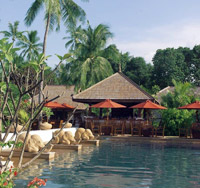On November 21, adviser to Minster K. Tchshmarityan Meruzhan Hakobyan announced that there is an overall decline in industry. The adviser brought up reasons such as the rise and fall of the national currency, the decrease in exports and the lack of competition of Armenian products in the foreign market due to the high prices. Deputy Minister of Trade and Economic Development Ara Petrosyan tried to ease the tension by talking about the field of tourism. In contrast to industry, tourism in Armenia is taking big steps forward; it’s rising 18-22% each year. This was the prediction made by President Robert Kocharyan and the correspondents of the field years ago. Based on that, tourism continues to grow at that rate and it neither goes down, nor goes up. Based on the data of the deputy minister, during the past nine months, 272,000 tourists have visited Armenia, which is 18% more than 2005 compared to the same time period. According to official data, during the past nine months of this year, there have been more tourists in Armenia than all of last year. In 2005, the number of tourists made up 268,000. Petrosyan says that by the end of this year, there will be a total of 380,000 tourists who have visited Armenia this year, so it will be 112,000 more than last year, but less by 20% than what Robert Kocharyan had predicted. The Armenian president had the hope that this year the number of tourists would reach 400,000. According to the experts of the field, tourism in Armenia “has taken a huge course of development”. What attracts the foreigners to come to the land with now sea or substructures for resting?
“Armenia attracts tourists with its historical/cultural inheritance, traditions and wonderful nature. It turns out that there is also a future for tourism of ethnic nostalgia in Armenia. As for the development of tourism for health purposes, it has “just begun”,” says Petrosyan.
According to the deputy minister, the increase in the number of tourists helps the hotel business. The number of hotels in Armenia is growing by the year, in fact, there are even hotels under construction out of Yerevan in Sevan, Tsakhkadzor, Jermuk, etc. Nearly 75% of tourists visiting Armenia are the Armenian compatriots from abroad, which are more interested in the “ethnic nostalgia tourism”, which includes Sevan Lake. With that said, there are more compatriots from Russia and America. According to the deputy minister, each tourist spends approximately 1000 dollars in Armenia in a week. It’s hard to say ho real this number is, but vacationing in Armenia costs more than, let’s say, Turkey or the coast of the Black Sea. That’s why there are more and more people each year who leave Armenia for those sites. A. Petrosyan doesn’t agree with that. He is of the opinion that the cheapest tour in the region is in Armenia and the Black Sea is no competition for Sevan Lake of Armenia. They’re different. Besides that, he believes that if the prices for services go up, then the demand also goes up both for tourists and for the improvement of our lives. Just like the prices for airfare continue to rise month after month. Of course, I would like to agree with Mr. Petrosyan, but even in Sevan this summer many hotel suites were left empty because of the high prices. Many Armenians preferred to go and come back the same day without renting hotel suites. The rent for one day in a wagon-trailer on the coast of Sevan ranged from 8000-20,000 drams and it was possible to see that number range from 20,000-80,000 drams in some high-class hotels. In fact, the vacationers complained that the prices had gone up 30-40%,but the quality hadn’t changed. As for the rise in airfares, everyone knows that airlines increase the prices to get profit. According to experts, parallel to the rise in the number of tourists and services, the quality of the service of the substructures also rises. In some cases, we can agree with that especially for the capital, where there is a big difference. But it’s still too early to consider that high-quality and compare it with, for example, Turkey’s resting zones. The increasing number of hotels in Yerevan proves that tourism is flourishing in Armenia “If it’s growing, then it’s profitable,” says Ara Petrosyan.
However, for some reason, the hotels don’t bring profit to the owners. In the list of 300 large taxpayers of Armenia, there were only two hotels-the “Armenia” hotel complex, which was in the 120th place and had paid 250 million dollars worth of taxes during the past nine months of 2006, of which 8.5 million drams made up the profit and income taxes, and the “Yerevan” hotel, which was in 160th place, paying 155 million dram tax of which direct taxes made up 36 million drams. At first sight, based on these numbers, you can come to the conclusion that the hotel business is not that profitable in Armenia. In that case, why is the number of hotels going up each year, or if the “Metropol” hotel owned by Minister of Transportation and Communication Andranik Manukyan doesn’t get any prpofit, why is he adding more taxes? This means that as the hotel business is profitable, it’s also shady. It means that the hotel owners are inclined to take the money from the tourists’ pockets and pay their taxes and lower the taxes they pay as a business to a minimum. Hotel owners consider their work as a foreign investment and get the privilege to not pay taxes. For example, the “Golden Palace” hotel built near “Victory” park in Yerevan is considered to be an investment by Greece, but the real owners are some high-ranking officials of Armenia.

